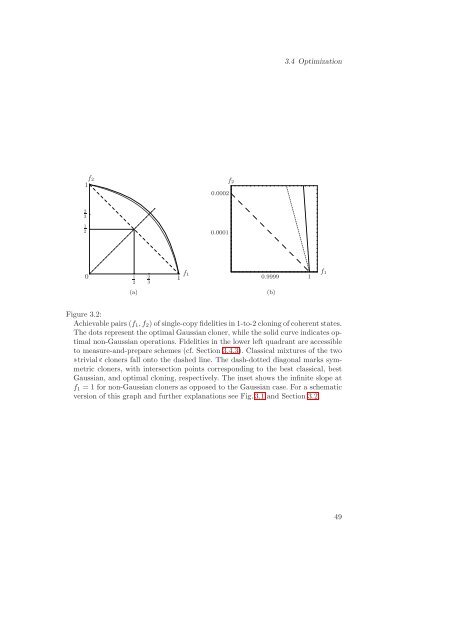Quantum Information Theory with Gaussian Systems
Quantum Information Theory with Gaussian Systems
Quantum Information Theory with Gaussian Systems
You also want an ePaper? Increase the reach of your titles
YUMPU automatically turns print PDFs into web optimized ePapers that Google loves.
1<br />
2<br />
3<br />
1<br />
2<br />
0<br />
f2<br />
1<br />
2<br />
(a)<br />
2<br />
3<br />
1<br />
f1<br />
0.0002<br />
0.0001<br />
f2<br />
0.9999<br />
3.4 Optimization<br />
Figure 3.2:<br />
Achievable pairs (f1, f2) of single-copy fidelities in 1-to-2 cloning of coherent states.<br />
The dots represent the optimal <strong>Gaussian</strong> cloner, while the solid curve indicates optimal<br />
non-<strong>Gaussian</strong> operations. Fidelities in the lower left quadrant are accessible<br />
to measure-and-prepare schemes (cf. Section 3.4.3). Classical mixtures of the two<br />
trivialcloners fall onto the dashed line. The dash-dotted diagonal marks symmetric<br />
cloners, <strong>with</strong> intersection points corresponding to the best classical, best<br />
<strong>Gaussian</strong>, and optimal cloning, respectively. The inset shows the infinite slope at<br />
f1 = 1 for non-<strong>Gaussian</strong> cloners as opposed to the <strong>Gaussian</strong> case. For a schematic<br />
version of this graph and further explanations see Fig. 3.1 and Section 3.2.<br />
(b)<br />
1<br />
f1<br />
49
















